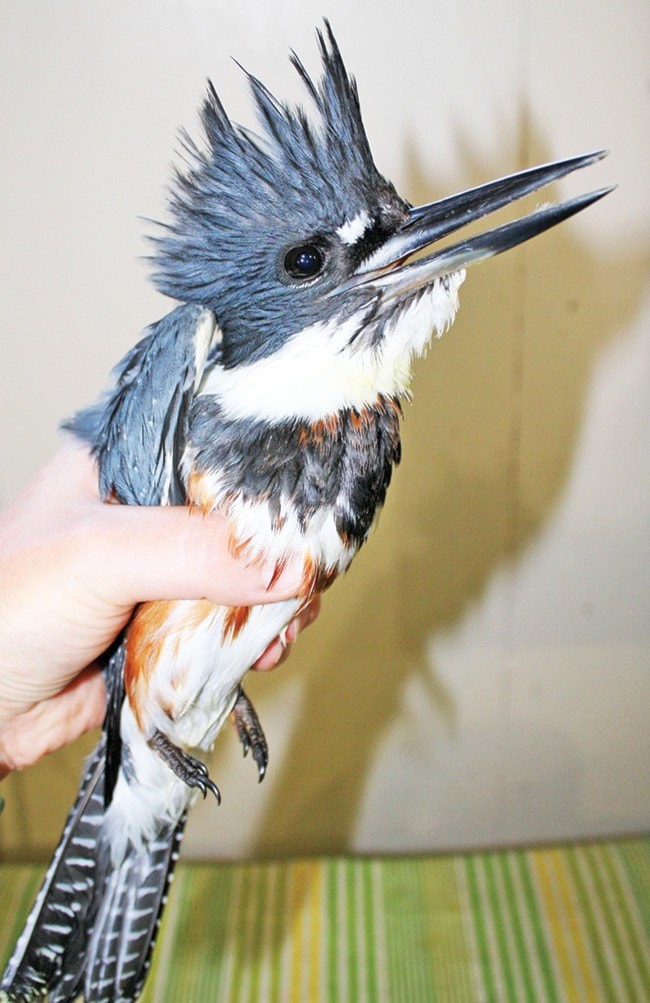The North Island Wildlife Recovery Centre (NIWRC) admitted a female belted kingfisher from Tofino after she was found, unable to fly, on a beachfront patio of a resort. It is likely that she flew into a glass patio door. Staff were able to arrange for her to be driven to Port Alberni where we picked her up. She has a healthy appetite for fresh fish right now and is gaining strength.
The belted kingfisher, one of the most widespread land birds in North America, remains poorly studied.
Throughout the continent, it inhabits diverse aquatic habitats where it typically perches over clear open water before plunge-diving for prey — chiefly fish, but also other aquatic animals such as crayfish. Undigested remains of such prey are regularly regurgitated as pellets, which fall beneath fishing and roosting perches.
By studying these pellets, some information on seasonal diets can be determined without collecting birds or directly observing their foraging behavior.
Although the belted kingfisher breeds at northern latitudes, and occasionally winters there if open water is available, most individuals migrate, some as far south as northern South America. Solitary except while breeding, both males and females of this species vigorously defend their territories along shorelines of lakes or rivers throughout the year. They do this with strident vocalizations, especially a reverberating mechanical rattle, and by aerial chases. Indeed this kingfisher’s rattle call is given at the slightest disturbance, and people are likely to hear this bird before seeing it.
The availability of suitable nesting sites —earthen banks where nesting burrows can be excavated — appears critical for the distribution and local abundance of this species.
This kingfisher prefers to excavate a nesting burrow near its fishing territory, raising a single brood annually. Burrows may be reused, but site tenacity is weak.
In some regions, human activities such as the digging of sand and gravel pits have created nesting sites that have stimulated population growth and enhanced opportunities for range expansion. Despite this species’ diet, environmental contaminants do not seem to have affected its productivity as with other fish-eating birds.
NIWRC is open to the public daily from
9 a.m.-5 p.m. Please visit our facility now with the new wildlife garden.
Being a non-profit organization, we depend on your support to continue our care of wildlife.
— Wild ‘n Free is written by Sylvia Campbell, co-founder of NIWRA. Please visit NIWRA’s website at www.niwra.org or call 250-248-8534 for more information. You can e-mail Campbell at sylrob2@telus.net.
